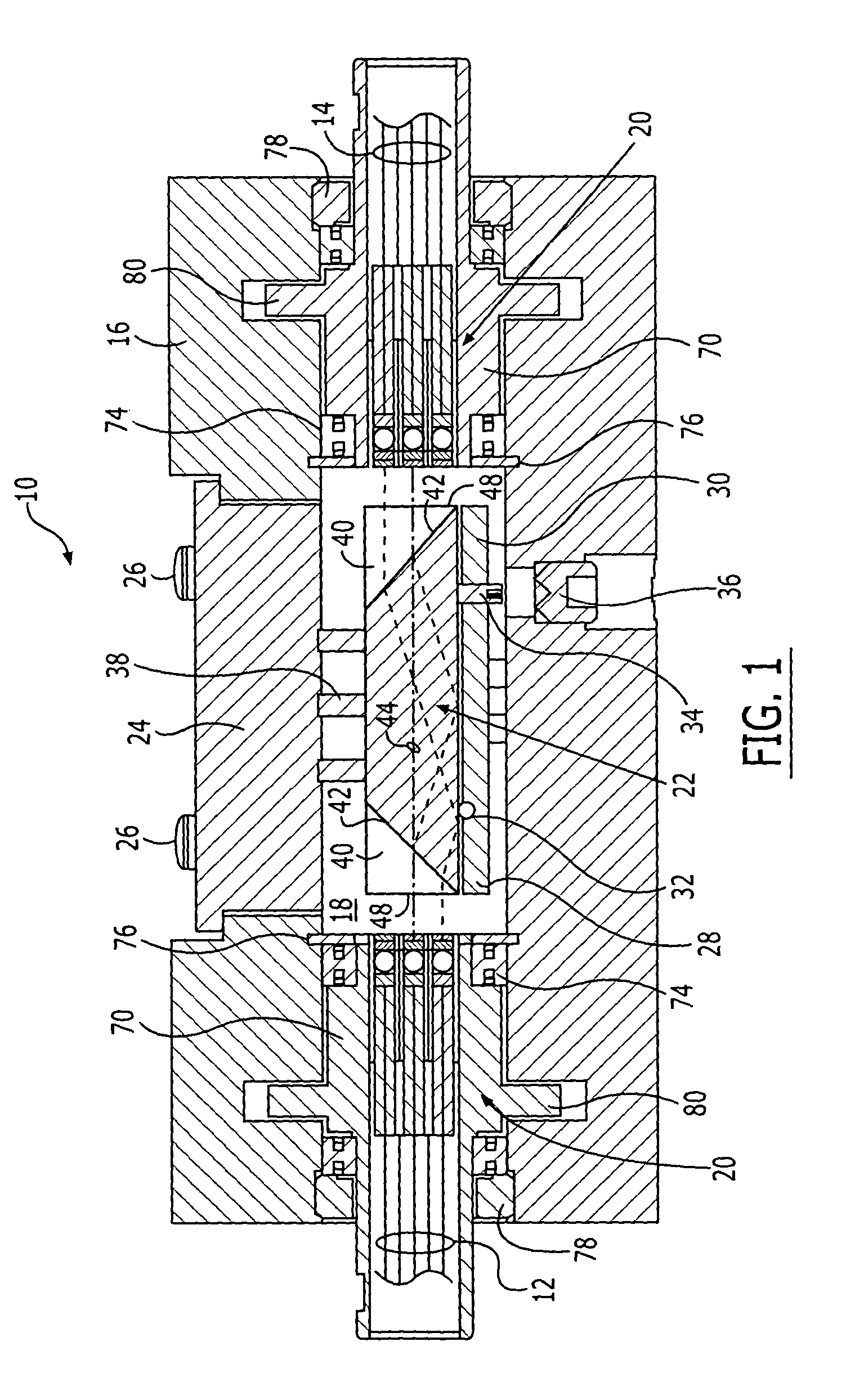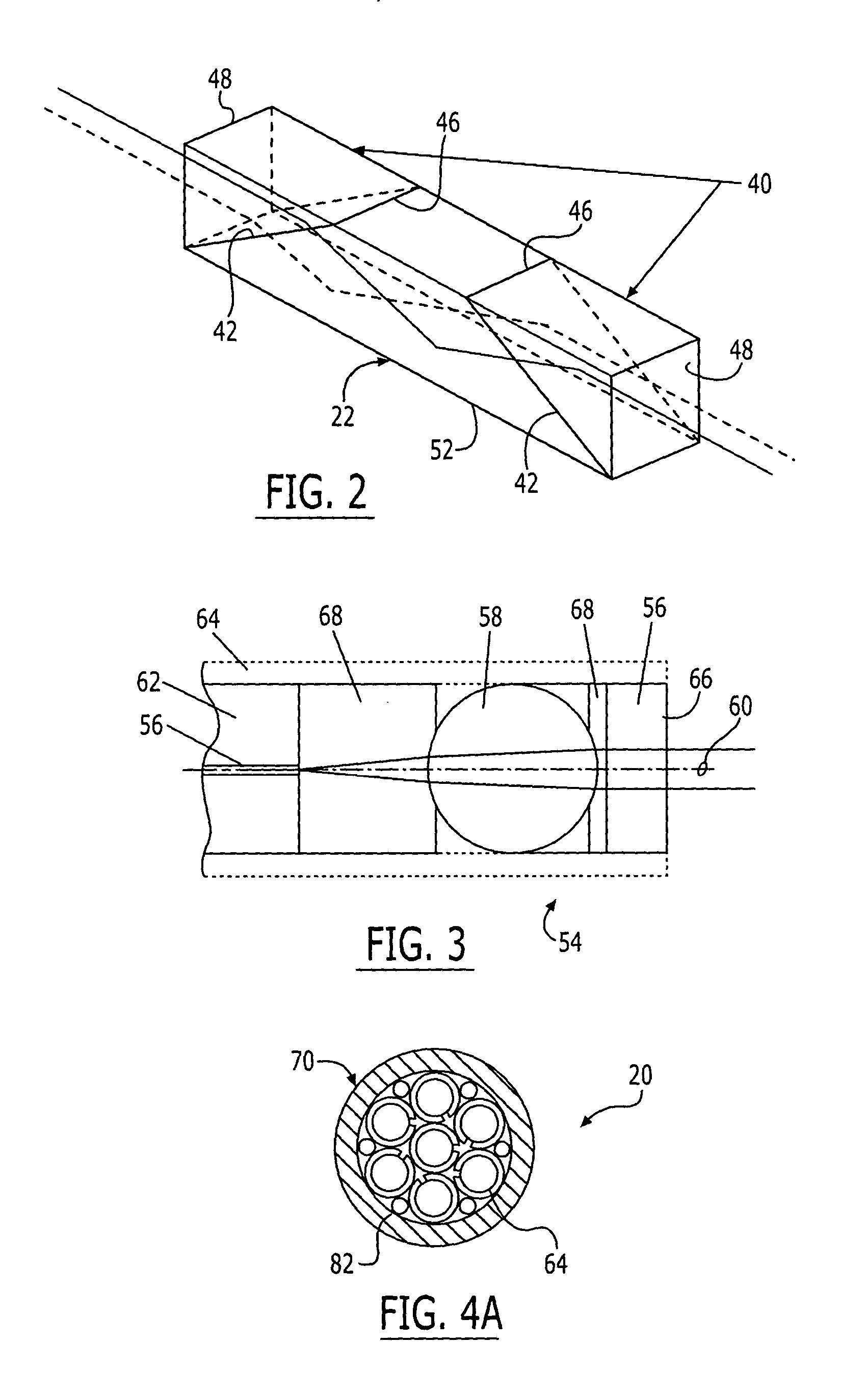Fiber optic rotary joint and associated alignment method
a technology of fiber optic rotary joints and alignment methods, which is applied in the direction of optics, fibre mechanical structures, instruments, etc., can solve the problems of affecting the effective focal distance of collimation lenses, affecting the optical properties of fluids that fill internal cavities, and affecting the efficiency of optical signals coupled, so as to facilitate the orientation of optical fibers
- Summary
- Abstract
- Description
- Claims
- Application Information
AI Technical Summary
Benefits of technology
Problems solved by technology
Method used
Image
Examples
Embodiment Construction
[0031] The present inventions now will be described more fully hereinafter with reference to the accompanying drawings, in which some, but not all embodiments of the invention are shown. Indeed, these inventions may be embodied in many different forms and should not be construed as limited to the embodiments set forth herein; rather, these embodiments are provided so that this disclosure will satisfy applicable legal requirements. Like numbers refer to like elements throughout.
[0032] As shown in FIG. 1, a fiber optic rotary joint 10 according to one aspect of the present invention is depicted. The fiber optic rotary joint may be employed in a variety of applications, including sub-sea as well as other applications. As described below, the fiber optic rotary joint is designed to optically interconnect first and second bundles 12,14 of optical fibers while permitting at least one of the bundles to rotate relative to the other bundle. While one bundle is generally held stationary and ...
PUM
 Login to View More
Login to View More Abstract
Description
Claims
Application Information
 Login to View More
Login to View More - R&D
- Intellectual Property
- Life Sciences
- Materials
- Tech Scout
- Unparalleled Data Quality
- Higher Quality Content
- 60% Fewer Hallucinations
Browse by: Latest US Patents, China's latest patents, Technical Efficacy Thesaurus, Application Domain, Technology Topic, Popular Technical Reports.
© 2025 PatSnap. All rights reserved.Legal|Privacy policy|Modern Slavery Act Transparency Statement|Sitemap|About US| Contact US: help@patsnap.com



